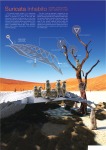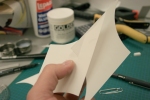Reflection
Architecture is a complex profession that relies on graphic communication in order to translate an abstract idea or a design vision into a built form. As such, graphic imagery performs a function of a language with a specific syntax, visual grammar, as well as a vocabulary of graphic tools. However, unlike spoken language, graphics are not governed by a finite set of expressive elements. There are virtually no limits to the number of ways an idea can be represented graphically. Given such a wide array of possibilities, simplicity and clarity become the unifying elements, lending credibility to the idea being expressed.
As with any spoken language, the fastest way to learn and truly understand the possibilities the graphic language offers is through continuous practice. As a designer, one must strive for clarity and simplicity each time an idea is expressed graphically, regardless of which branch of design is concerned. Through practice and repetition, clear patterns of expression emerge.
Assignment 2D | Habitat |
Gallery

This gallery contains 1 photo.
Graphics II- Sunday Study #6 || Maya Poly Modelling || The Thingy
Gallery

This gallery contains 1 photo.
Graphics II- Sunday Study #5 || Scene Render ||
Image
Graphics II- Sunday Study #4 || Component Fabrication ||
Gallery

This gallery contains 4 photos.
Graphics II- Sunday Study #3 || Grasshopper Parametric Exploration ||
Gallery

This gallery contains 1 photo.
assignment 1b: Component + Connection
Gallery

This gallery contains 2 photos.
Graphics II- Sunday Study #2 || NURBS Exploration ||
Gallery

This gallery contains 1 photo.
assignment 1a: Component + Connection
Gallery

This gallery contains 5 photos.

